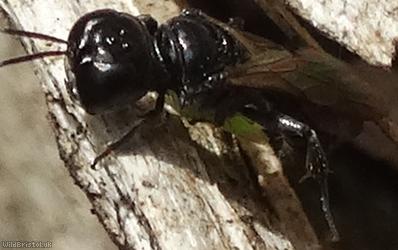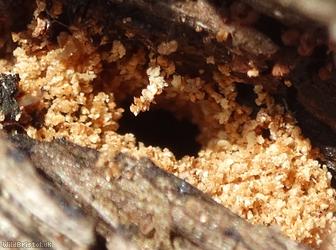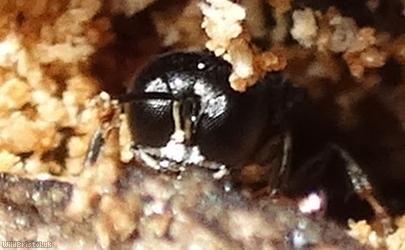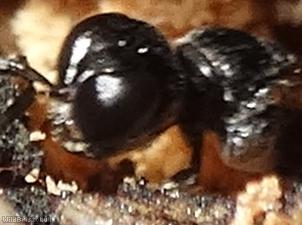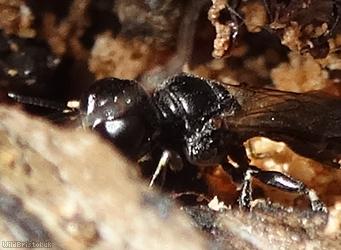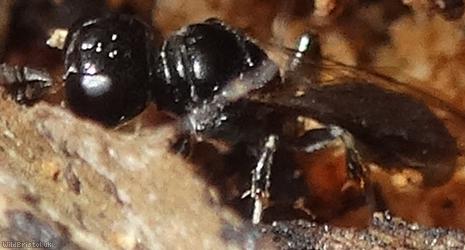Ring-legged Crossocerus - Crossocerus annulipes
Favourite Photos
Species Description
Widespread but local throughout the UK being more common in the South and scarce in the North. It is probably increasing in distribution due to a combination of climate change and favoured habitat (wood ) especially in gardens. Habitat includes: Anywhere with rotting wood (mainly softwoods but also hard wood) in sunny, sheltered locations and a nearby larval food supply including: gardens, parks, allotments, churchyards, woodland rides, scrub, hedgerows, fields (fence posts), fences etc. Length: Male = 4.5 - 6 mm, Female = 5 - 8 mm. Life story: Females burrow into dead, decaying wood often with already existing fissures and burrows, excavating the wood by scraping / chewing it off with their mandibles and depositing the saw-dust at the entrance. She then collects bugs 1 at a time, (mainly from the Typhlocybidae family but Psyllid and Mirid bugs have also been recorded) and stuffs them into the burrow (the record number is 500 between 20 cells). Finally she lays the eggs and backfills the burrow slightly with sawdust then moves onto the nest. Flight period: May to September (Bivoltine).
My notes:
I've recorded them using a rotting decking with lots of cracks and fissures, old screw holes etc. in a very warm sunny, sheltered spot; often in mini aggregations of females, sometimes using the same entrance as one another but with separate branches. They may accidentally wonder into one another's burrow as they seem to struggle to find their own and instead wander into whatever burrow they happen to find, including one another's (I haven't seen them steal each others prey items). This initiates the creation of multiple nests on the go at once.
Excavation usually takes around 5 minutes but it depends on how already made a state it was in the first place. The single species of bug collected was Empoasca vitis. Gathered one at a time with foraging gaps ranging from around a minute to 10 or 15 to then be stuffed into the newly excavated burrow. Finally eggs are then laid and the burrow is partially backfilled with sawdust only for the Female to move straight on to the next.
Crossocerus annulipes // Crossocerus styrius /
Crossocerus wesmaeli
Crossocerus walkeri
Crossocerus varus
Crossocerus tarsatus
Crossocerus podagricus /
Crossocerus palmipes
Crossocerus congener
Crossocerus elongatulus
Crossocerus megacephalus /
Crossocerus nigritus /
Crossocerus capitosus -
